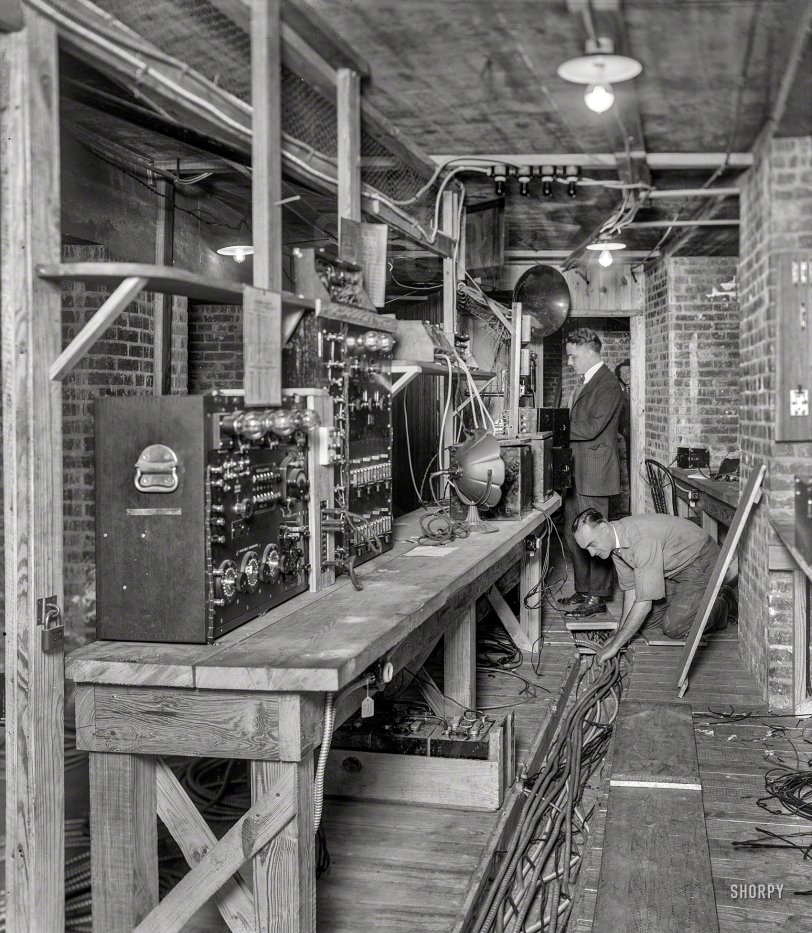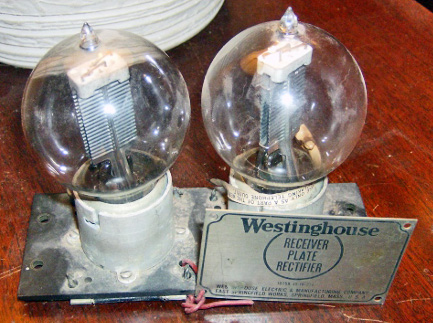


Framed or unframed, desk size to sofa size, printed by us in Arizona and Alabama since 2007. Explore now.
Shorpy is funded by you. Patreon contributors get an ad-free experience.
Learn more.

- Texas Flyer wanted
- Just a Year Too Soon
- WWII -- Replacing men with women at the railroad crossing.
- Yes, Icing
- You kids drive me nuts!
- NOT An Easy Job
- I wonder
- Just add window boxes
- Icing Platform?
- Indiana Harbor Belt abides
- Freezing haze
- Corrections (for those who care)
- C&NW at Nelson
- Fallen Flags
- A dangerous job made worse
- Water Stop
- Passenger trains have right of way over freights?
- Coal
- Never ceases to amaze me.
- Still chuggin' (in model form)
- Great shot
- Westerly Breeze
- For the men, a trapeze
- Tickled
- Sense of loneliness ...
- 2 cents
- Charm City
- What an Outrage
- Brighton Park
- Catenary Supports
Print Emporium
Long Distance: 1921

Some of the "amplifying telephone" equipment that carried audio from the Nov. 11, 1921, Armistice Day ceremony at Arlington National Cemetery, where Warren Harding spoke over the casket of the Unknown Soldier, to loudspeakers set up for the crowds outside as well as in New York and San Francisco. More here.
November 1921. "This is the delicate machinery being installed beneath the Arlington Amphitheater which will amplify the President's voice one thousand billion times when he makes his address on Armistice Day in honor of America's Unknown Warrior." Harris & Ewing Collection glass negative. View full size.
Amplification factor
The amplification factor of "one thousand billion" may not be as wild as it seems. A modern dynamic microphone only produces a couple of nanowatts of power. Dynamic and ribbon microphones were not yet available, but the condenser microphone had been invented by Bell Labs in 1916. While carbon microphones (used in telephones) had high power output, their audio quality was poor. If a condenser microphone was used, the stated amplification factor would translate to tens or at most hundreds of watts delivered to the loudspeakers.
Rectifier Tubes
These early hulks are quite interesting. This example was made by Westinghouse for license to Western Electric as seen on the decal.

Zinc-plated, vacuum-tubed culture
Hand me a Stone knife and another Bear skin, Carl.
Western Electric
The tubes shown are Western Electric "tennis ball" types, probably 101D or 102D, but possibly also 104D or 205D. Any of which can be worth $1,000 today. Clearly what is shown is really just a preamp-level gain stage setup, any real power amps would have been bigger, and used different tubes.
Secret Cellar
I wonder what they use this space for today?
Raised flooring
This is a very early example of raised flooring for cabling. AT&T began using raised floors in mid '80s.
The Four Black Bulbs
Up on the ceiling in sockets, possibly they're used as some sort of a load? They're dark glass as to not cause unnecessary brightness in the space when in use. Early in my career I was working on a 1500 watt power supply that needed to be load tested. The resistors and parts to build the load would have been hundreds of dollars (a lot in 1980) Instead we bought 15 light sockets and 15 100 watt bulbs and wired them up to get a 1500 watt load. Cost was under $50. Seeing these bulbs on the ceiling brought back that memory. I also could be totally wrong.
[I suspect they're red. - Dave]
300 dB
One thousand billion! That's a lot of wattage from this cottage. Maybe someone else knows what that works out to in 'jigawatts'.
Nothing made of plastic to see here
That equipment would still work now, almost 100 years later.
[None of this would have been possible without plastics, chief among them the synthetic resin Bakelite. - Dave]
























On Shorpy:
Today’s Top 5